
Ophthalmology and Therapy
Scope & Guideline
Empowering Professionals with Cutting-Edge Insights
Introduction
Aims and Scopes
- Clinical Research on Ocular Diseases:
The journal publishes studies investigating the clinical characteristics, treatment efficacy, and management strategies for a variety of ocular diseases, including diabetic retinopathy, age-related macular degeneration, glaucoma, and dry eye disease. - Innovative Therapeutic Approaches:
There is a consistent focus on novel therapeutic modalities, including pharmacological treatments, surgical techniques, and the application of advanced technologies like artificial intelligence and telemedicine in ophthalmology. - Patient-Centered Outcomes:
Research emphasizing patient-reported outcomes, quality of life assessments, and the impact of ocular diseases on daily living is a core area, highlighting the importance of understanding patient experiences. - Technology Integration in Ophthalmology:
The journal explores the integration of digital health solutions, including teleophthalmology, AI-based diagnostics, and home monitoring systems, reflecting the evolving landscape of eye care. - Cost-Effectiveness and Health Economics:
Economic evaluations related to the treatment of ocular conditions are frequently addressed, focusing on the cost-effectiveness of various interventions and their implications for healthcare systems.
Trending and Emerging
- Artificial Intelligence and Machine Learning:
The incorporation of AI and machine learning technologies in diagnostics and treatment planning is on the rise. Studies exploring AI applications for disease detection and management are becoming increasingly prominent. - Telemedicine and Remote Monitoring:
The COVID-19 pandemic has accelerated the adoption of telemedicine in ophthalmology. Recent publications emphasize the effectiveness and patient acceptance of remote monitoring technologies for managing ocular diseases. - Personalized Medicine and Tailored Therapies:
There is a growing emphasis on personalized approaches to treatment, particularly in managing conditions like age-related macular degeneration and diabetic retinopathy. Research focusing on individualized therapy based on patient-specific factors is trending. - Sustainability and Environmental Impact in Ophthalmology:
Emerging discussions on the environmental impact of ophthalmic practices and the shift towards sustainable solutions in eye care reflect a growing awareness of ecological considerations within the field. - Integrated Multidisciplinary Approaches:
Research that combines insights from various disciplines, including genetics, immunology, and systemic diseases, to inform ocular health is gaining traction, indicating a holistic approach to understanding and treating eye diseases.
Declining or Waning
- Traditional Surgical Techniques:
While surgical techniques remain important, there is a noticeable shift towards minimally invasive methods and novel interventions. Traditional approaches may be losing prominence as newer, less invasive options gain traction. - General Reviews and Non-Evidence-Based Articles:
The journal appears to be moving away from general reviews that do not provide new insights or evidence. There is a growing preference for studies that offer original research findings or systematic reviews with robust methodologies. - Basic Science Research:
Research focused solely on basic science without direct clinical applications is becoming less frequent. The journal is prioritizing studies that directly relate to clinical practice and patient outcomes, reducing the emphasis on purely laboratory-based studies.
Similar Journals
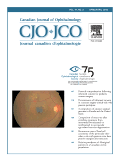
CANADIAN JOURNAL OF OPHTHALMOLOGY-JOURNAL CANADIEN D OPHTALMOLOGIE
Transforming vision care with impactful research.Canadian Journal of Ophthalmology - Journal Canadien d'Ophtalmologie, published by the prestigious Canadian Ophthalmological Society, serves as a leading platform for disseminating cutting-edge research in the field of ophthalmology. With an ISSN of 0008-4182 and E-ISSN 1715-3360, the journal boasts a commendable impact factor and maintains a strong presence within the medicine and ophthalmology categories, ranking in the Q2 quartile. This journal not only provides significant insights into clinical practices and advancements but also contributes to the understanding of ocular health issues facing contemporary society. Since its inception in 1966, it has published high-quality research, making substantial strides in both practical and theoretical aspects of ophthalmology until 2024. Although it is not an open-access journal, it establishes a vital resource for researchers, professionals, and students alike, fostering an informed community dedicated to improving vision care.
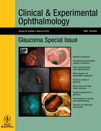
CLINICAL AND EXPERIMENTAL OPHTHALMOLOGY
Pioneering Discoveries for Visionary FuturesCLINICAL AND EXPERIMENTAL OPHTHALMOLOGY is a leading peer-reviewed journal published by Wiley, renowned for its commitment to advancing the field of ophthalmology. With an impressive impact factor reflecting its high-quality research contributions, this journal is ranked in the Q1 category both in Medicine (miscellaneous) and Ophthalmology, signifying its crucial role in shaping contemporary ophthalmic research. It boasts a remarkable position in the Scopus Ranks, standing at Rank #13 out of 137 in the field of Medicine and Ophthalmology, placing it within the 90th percentile among its peers. Having been in circulation since 1979, this journal encompasses a broad scope of topics that aim to disseminate groundbreaking findings and stimulate dialogue among researchers, clinicians, and students alike. It is easily accessible to a global audience, embodying the principles of open access, making valuable research available to all. For anyone seeking to stay at the forefront of ophthalmology, CLINICAL AND EXPERIMENTAL OPHTHALMOLOGY is an indispensable resource that fosters knowledge and innovation in the ever-evolving landscape of eye care.
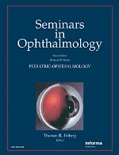
Seminars in Ophthalmology
Elevating Standards in Eye Health ResearchSeminars in Ophthalmology is a prestigious journal published by Taylor & Francis Inc, dedicated to advancing knowledge in the field of ophthalmology and related medical areas. Established in 1986, this journal has consistently provided a platform for high-quality research and insights, supporting the community with its impactful publications. With an impressive ranking of #55 out of 137 in the Ophthalmology category, the journal currently holds a Q2 quartile in both ophthalmology and miscellaneous medicine as of 2023, reflecting its significant contribution to the discipline. Researchers and practitioners can access a wealth of information covering a comprehensive range of topics, bolstering both clinical practice and academic inquiry. While not an open-access publication, Seminars in Ophthalmology remains a crucial resource for advancing ophthalmic research, fostering collaboration, and disseminating valuable findings in a rapidly evolving specialty.

Nepalese Journal of Ophthalmology
Championing Research for Brighter Futures in Eye HealthNepalese Journal of Ophthalmology, established by the NEPAL OPHTHALMIC SOC, is a premier Open Access journal dedicated to advancing the field of ophthalmology. With its ISSN 2072-6805 and E-ISSN 2091-0320, the journal provides an important platform for sharing innovative research and clinical findings in eye health. Since its inception in 2009, the journal has aimed to disseminate high-quality research that addresses contemporary challenges in ophthalmic practices, thus supporting improved patient care and outcomes within Nepal and beyond. The journal has achieved notable recognition, evidenced by its Scopus rank of #267 out of 915 in the field of General Medicine, placing it within the 70th percentile. Researchers, professionals, and students will find valuable information in its comprehensive articles, which cater to a multidisciplinary audience interested in the latest developments in ophthalmology. Emphasizing accessibility, the journal ensures that all published content is freely available, fostering collaboration and knowledge sharing in the global medical community.
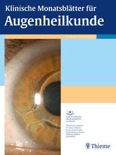
KLINISCHE MONATSBLATTER FUR AUGENHEILKUNDE
Illuminating Insights in Eye Health.Klinische Monatshefte für Augenheilkunde is a distinguished peer-reviewed journal published by Georg Thieme Verlag KG, dedicated to advancing knowledge in the field of ophthalmology and general medicine. With an ISSN of 0023-2165 and an E-ISSN of 1439-3999, this journal has been a reputable platform for researchers and clinicians since its inception in 1963, continuing its impactful contributions through to 2024. Recognized in the Q3 quartile for both Medicine (miscellaneous) and Ophthalmology, this journal serves as a vital resource for those involved in ocular health, offering insights into clinical practices, recent advancements, and essential research findings. Despite its traditional publishing model, the journal retains a significant role in the academic community, as evidenced by its current Scopus ranking of #90/137 in the field of Ophthalmology. It is an essential read for professionals and students aiming to stay at the forefront of ophthalmic research and clinical innovations.

EUROPEAN JOURNAL OF OPHTHALMOLOGY
Pioneering Insights into Ocular DiseasesThe EUROPEAN JOURNAL OF OPHTHALMOLOGY, published by SAGE PUBLICATIONS LTD, is a leading international journal in the field of ophthalmology, dedicated to advancing the understanding and treatment of ocular diseases and disorders. With an ISSN of 1120-6721 and an E-ISSN of 1724-6016, the journal aims to provide a platform for innovative research, critical reviews, and comprehensive studies that span the diverse aspects of the discipline. As part of its commitment to disseminating high-quality research, the journal is indexed in Scopus, achieving an impressive rank of #47 out of 137 in the Medicine - Ophthalmology category, indicating its strong impact within the academic community. With a current impact factor that places it in the Q2 quartile for both Medicine (miscellaneous) and Ophthalmology as of 2023, it offers researchers and practitioners access to important findings and developments in eye health. The journal's converged years from 1991 to 2024 exemplify its longstanding commitment to the field, making it an essential resource for anyone looking to stay at the forefront of ophthalmological research.
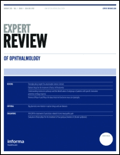
Expert Review of Ophthalmology
Advancing Vision Science through Expert InsightsExpert Review of Ophthalmology is a leading academic journal published by ROUTLEDGE JOURNALS, TAYLOR & FRANCIS LTD, specializing in the rapidly evolving field of ophthalmology. With its ISSN 1746-9899 and E-ISSN 1746-9902, this journal has been at the forefront of disseminating critical research and insightful reviews since its inception in 2006. Covering a broad spectrum of topics within ophthalmology, it plays a pivotal role in advancing knowledge and practice, especially given its prestigious standings in various quartile rankings, including Q1 in Public Health and Q2 in Immunology and Allergy for 2023. The journal aims to provide professionals, researchers, and students with comprehensive perspectives on contemporary challenges and innovations in ophthalmology. Generously supported by a robust peer-review process, the journal ensures that all published works meet high academic standards, thereby serving as a vital resource for anyone looking to stay informed about the latest developments in eye care and vision science. By bridging research and clinical application, Expert Review of Ophthalmology is essential for those aiming to contribute meaningfully to this critical field.

Augenheilkunde Up2date
Unveiling the Latest in Eye Health Developments.Augenheilkunde Up2date is a pivotal journal in the field of ophthalmology, published by GEORG THIEME VERLAG KG, a renowned publisher known for its commitment to advancing medical knowledge. With its ISSN 1616-9719 and E-ISSN 1616-9735, this journal serves as a vital resource for researchers, professionals, and students interested in the latest developments and nuanced discussions in eye health. Although not available as open access, its curated content offers significant insights into contemporary research, clinical practices, and emerging trends in ophthalmology, thus promoting the continuous professional development of its readers. There is an emphasis on providing comprehensive reviews that encapsulate the pertinent advancements in the field, making it an essential publication for those aiming to enhance their expertise in eye care and vision science.

BMC Ophthalmology
Transforming Insights into Impact in OphthalmologyBMC Ophthalmology is a premier open access journal dedicated to advancing the field of ophthalmology through the publication of high-quality, peer-reviewed research. Published by BMC in the United Kingdom, this journal has been a vital resource since its inception in 2001 and continuously contributes to the global dialogue in vision science. With an impact factor reflecting its growing influence, BMC Ophthalmology is ranked among the top quartiles (Q2) in both general medicine and ophthalmology, emphasizing its significance in medical research. The journal encourages submissions that explore innovative diagnostics, treatment approaches, and understandings of various ocular diseases, thereby appealing to researchers, clinicians, and students alike. As an open access platform, it ensures that cutting-edge research is not only published but also readily accessible to a worldwide audience, promoting further study and collaboration in this essential area of medicine.
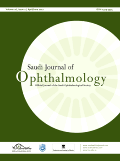
Saudi Journal of Ophthalmology
Connecting Knowledge: Uniting Global Experts in Visual HealthSaudi Journal of Ophthalmology, published by Wolters Kluwer Medknow Publications, stands as a crucial platform for the dissemination of innovative research and clinical practices in the field of ophthalmology. Since its inception in 2009, this journal has effectively contributed to the growing body of knowledge with a focus on addressing the diverse visual health challenges faced globally. With an ISSN of 1319-4534 and a E-ISSN of 2542-6680, the journal is indexed in Scopus, where it ranks in the Q3 category of ophthalmology, reflecting its commitment to quality research despite the competitive landscape. Situated in India, it provides a unique regional perspective while facilitating global discourse among researchers, practitioners, and students in ophthalmological sciences. Although it currently does not operate as an open-access journal, the Saudi Journal of Ophthalmology is essential for those aiming to expand their understanding of advancements in eye care, making it a valuable resource for professionals dedicated to enhancing patient outcomes through informed research and clinical practice.